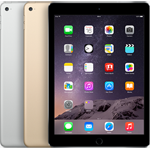Apple recently announced the release of their new iPad Air 2 and iPad mini 3. Many were underwhelmed by the launch of the iPad mini 3 as it is not a big upgrade over the previous version.
Profits from iPads have dropped considerably. Does this mean that Apple are losing their grasp on the tablet market they helped define?
In this article, I would like to talk about the recent announcement and why I think the new iPad mini 3 offers such bad value for money.
I Found a Great Tablet at an Affordable Price
Last week I purchased a tablet for my girlfriend. She had advised me previously that she did not need one. I believe this was partly due to her having her iPhone 5 stolen earlier this year. Since then, she has stated many times that she does not want to spend a lot of money again on phones and other electronic devices ever again. This is a natural response to having something stolen.
While I do like finding bargains, I am not afraid to spend money to get a good product. When I purchased my iPad 3 in June 2012, I chose the 64GB model; which was the most expensive version available at the time. However, I knew that my girlfriend would be upset if I bought her something as expensive.
Shortly before her birthday, Tesco released a budget tablet in the UK entitled Hudl2. It was the successor to their budget Android tablet Hudl that they released last year.
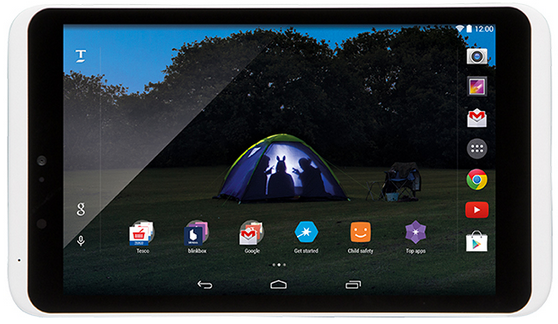
For £129 (around $208 USD), the specs are impressive.
- 8.3″ IPS LCD screen that offers full HD (1920×1200 resolution at 273 pixels per inch)
- 16GB built in hard drive and micro SD slot to expand storage (they state that the limit for micro SD cards is 32GB, but there are users who are using 128GB)
- 1.83 Ghz Intel® Atom Quad-Core Z3735D processor
- 2GB RAM
- 1.2MP front facing camera capable of 720P resolution and 5MP back facing camera capable of 1080P
- Micro HDMI port for connecting to the television
- 8 hours battery
It’s a fantastic little device. A similar sized device to the Hudl2 is the Samsung Galaxy Tab S 8.4. It also offers 16GB storage and has a micro SD card slot for expansion; but lacks the micro HDMI port. What it does offer is 3GB of RAM and an octo-core processor.
The fact is that my girlfriend would never use that additional processing power as she will not use the tablet for games. And with the Samsung tablet retailing at £269.99 on Amazon UK, it is more than double the price of the Hudl2 that I purchased her. It highlights how much of a bargain the Hudl2 is at the moment.
Down the line, I may even consider getting one for myself. It does everything I want: Games, movies, YouTube, reading, and browsing. Plus the micro HDMI port means that it could be used as a portable media device to play movies through a television. I do love the look of iPads, however the competition has caught up and they do not offer as good value for money anymore.
Apple’s Plethora of iPads
I purchased my iPad 3 in June 2012 in Colombia. The tablet market was not as diverse as it is today. Sure, there were several Android tablets out, however the two best tablets out at the time were the Samsung Galaxy Tab 2 and the iPad 3.
I tried all of the tablets in the shops and was all set to buy the Galaxy Tab 2. It had a good screen, I liked the open nature of Android, and I liked the fact it had a micro SD slot. However, around the time I was making my decision, the price of the iPad 3 dropped in price in Colombia considerably. It was now around £120 cheaper than it was in the UK and the basic model of the iPad 3 was the exact same price as the Galaxy Tab 2.
Despite hating iTunes with a passion, the drop in price convinced me to buy the iPad. The decision was made easier by the fact that Android had very few applications optimised for tablets; whilst iOS had hundreds of thousands. It was the right device to buy. I have since passed the iPad onto my little brother, but it was a great purchase and I got my monies worth.
When I bought the iPad 3, I already had a 27″ iMac and an iPhone 4. However, don’t be misled into thinking that I was a big Apple fan. They make good looking devices, but they are usually vastly overpriced.
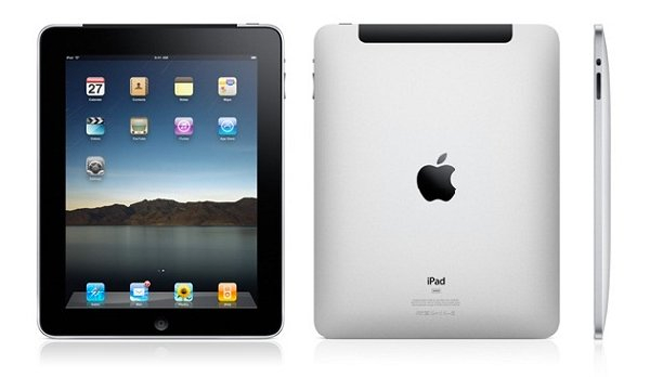
I purchased the iPhone 4 when it was launched for the same reason I purchased the iPad 3: It was the best device available. The lack of dedicated tablet apps for Android meant that I would have been opting into an inferior ecosystem if I chose an Android tablet in 2012.
Likewise, when I bought the iPhone 4, it was the best all round smartphone available. Previously, I had bought the second Android smartphone ever released; the HTC Hero. It was painfully slow and I ended up selling it a month or so later and buying a Blackberry. The QWERTY keyboard made the Blackberry a great phone for messaging and emailing; however it was a terrible device for browsing the web and playing games.
Android soon caught up with iOS and in my opinion there is little between the operating systems today from a feature point of view. Without doubt, Android devices offer the best value.
My girlfriends birthday fell just a week or so before the announcements of the new iPad and new Google Nexus devices. I had no plans on buying her an iPad, however I always pay attention to releases of new devices.
Apple announced two new iPads: The iPad Air 2 and the iPad mini 3.
There were two things that surprised me about this announcement. Firstly, I was surprised to see that Apple are now selling five iPad devices. Secondly, I was surprised that Apple upgraded next to nothing in the iPad mini 3.
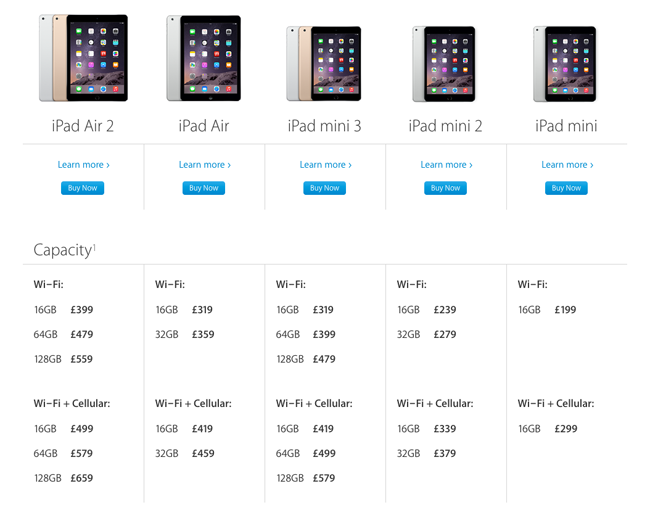
When I purchased my iPad 3 over two years ago, I had two options: Purchase the iPad 2 or purchase the iPad 3. That was it. There was not much of a saving for me to go with the iPad 2 and the iPad 3 had a much better spec, so it was an easy decision to make. There was also an option of a cellular (3G) model; though that was never a consideration as I would never use it.
Someone buying an iPad today does not have such an easy decision. There are five different versions available and each model comes with multiple storage options (except the iPad mini 1, which only comes in 16GB). There is also the decision of WiFi or WiFi and cellular.
Tech blogs such as cNet have noted how much harder it is to choose an iPad now. I’m a tech savvy guy, so this kind of decision is a little easier for me; however I have no doubt this presents a difficult decision to parents who are buying iPads as gifts for their kids.
The idea behind keeping the first iPad mini on sale is to have an iPad that can be sold to the lower end of the market. Well, that is what most people believe.
Let’s compare the iPad minis that are available (using UK prices).
In the UK, the first iPad Mini still costs £199 for the 16GB version. Seems a great price for an iPad, doesn’t it? However, when you look closer, it’s a pretty poor deal. The first iPad mini has a poor resolution of only 1024×768 pixels. That is only 163 pixels per inch. If you recall, the Hudl2 Android tablet I purchased for my girlfriend only cost £129 and that has a resolution of 1920×1200 pixels; which is 273 pixels per inch.
At £239 for the 16GB version, the iPad mini 2 gives you the best value by far. It only costs £40 more for this upgrade. Yet, you get a much improved screen; 2048×1536 pixels. That is 326 pixels per inch. The A5 processor has also been replaced by the more powerful A7 processor. The camera has a new panorama mode and there is now 3xZoom for video. A MIMO antenna is also built into the iPad mini 2.
In short, £40 gets you a much faster device with a much improved screen and many more features. It is the smart buy.
The 16GB version of the new iPad mini 3 costs £319. That’s an increase of £80 over the iPad mini 2.
So what does a 34% jump in price get you? Pretty much nothing.
The new iPad mini 3 features Apple’s fingerprint identity sensor. That’s it. Everything else has remained the same. They should have named it the iPad Mini 2b.
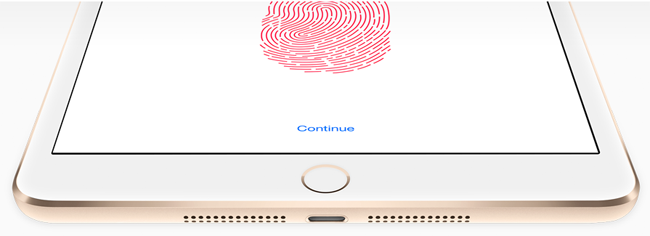
I can see the benefits of the fingerprint sensor on a phone. Phones are taken with you everywhere and have a higher chance of being stolen. However, tablets tend to be used at home. And when they are taken somewhere, they tend to be carried in a bag. Sure, there is still a risk of an iPad being stolen, but people are less likely to bring out an iPad in a busy train and start using it.
I am unsure as to why Apple have released the iPad mini 3. I would suspect that problems with development held back a proper upgrade. Though that is wishful thinking. The iPhone 5C illustrated that Apple are willing to put some foil round a turd i.e. sell an average device at a premium price.
The upgrade for the iPad Air is a little better. The original retails at £319 in the UK for the 16GB version. The new iPad Air retails at £399.
The additional £80 gets you more than just the fingerprint sensor. The new iPad Air uses an A8 processor rather than an A7. It also offers burst mode for photographs, slow motion video, and a barometer. The depth of the iPad Air has also dropped from 7.5mm to 6.1mm and the weight has dropped from 469 grams to 437 grams.
There is no real reason for existing iPad Air owners to upgrade, but at least new iPad Air owners know that their additional £80 will get them more than just a fingerprint sensor. They will get a faster tablet with more photography features that is slimmer and lighter.
Apple Losing Ground to Android Alternatives
The iPad Air 2 appears to be a decent upgrade to an already great looking device. However, the launch of the iPad mini 3 is baffling. I realise that millions of Apple drones will still purchase the more expensive third version of the iPad mini; despite the fact it’s just a mini 2 with a fingerprint sensor.
If Apple have any sense, what they will do is remove the iPad mini 2. From a business point of view, it makes the most sense. It would give those who are unsure about what iPad to buy a reason to go with the more expensive option, rather than the cheaper one.
The original iPad mini is looking outdated. There are now Android devices available 40% cheaper than have a much better specification. I won’t deny that iOS is a good operating system; but is it so good that people will pay £199 for what is effectively an entry level tablet?
Tech websites are reporting that iPad sales have dropped 13% this year. The theory is that this is because the the iPhone is getting bigger. I’m not so sure.
Firstly, there are less people out there without a tablet and those who do may not be ready to upgrade. I imagine Android tablet companies have been affected by this too.
Secondly, the Android tablet market is very competitive. Android completely dominates the lower end of the market, however the upcoming Google Nexus 9, the Samsung Galaxy 9 and Amazon Fire HDX 8.9; illustrate that Android is eating into the premium end of the market too.
Apple are in a difficult position. They cannot make their entry level iPad too cheap or sales of their more expensive iPads will drop. However, I fail to see how they can reach the lower end of the tablet market if they do not.
Do not shed a tear for Apple just yet. While iPad and iPod sales dropped this year, sales of everything else increased. 9To5Mac reported that in quarter 4 this year:
- iPhone: 39.272 million, up 16.2%
- iPad: 12.316 million, down 12.5%
- Mac: 5.52 million, up 20.7%
- iPod: 2.62 million, down 25.1%
- iTunes: $4.208 billion, up 8.2%
- Accessories: $1.486 billion, up 12.7%
This resulted in total revenue of $42.123 billion, up 12.4%.
Perhaps the drop in iPad revenue is just a blip. There are rumours of an iPad Pro being released with a huge 12.9-inch display. If they also release a proper upgrade to the iPad Mini 3, they could see iPad sales increase significantly in 2015. Time will tell.
Thanks for reading.
Kevin

